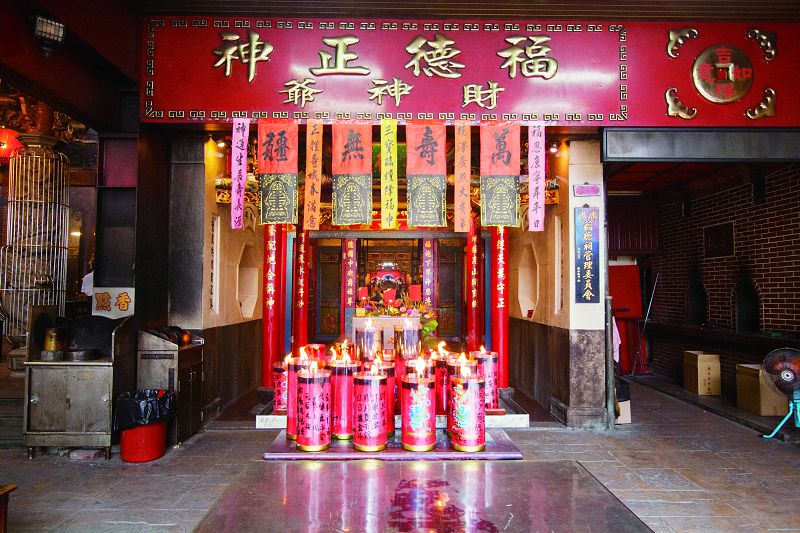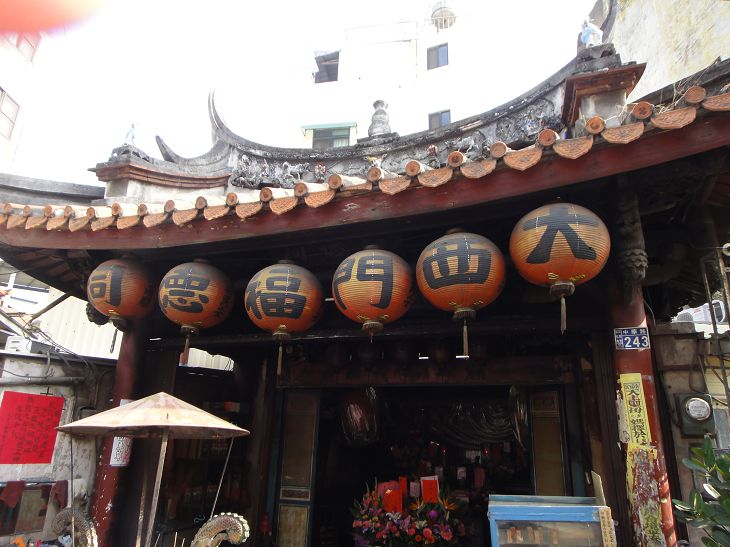Enshrining Deity: God of the Land
History
Fude Shrine at the west gate of Changhua enshrines the God Fude (God of the Land). He is the guardian of land, so the shrine is also called the West Gate Shrine of the God of Land. Its founding year was not documented. From the plaque hanging in the shrine, we can speculate that this shrine was probably built in the Qianlong Period Qing Dynasty. In the history of Taiwan’s settlement, God of the Land has been a common belief. In the country, God of the Land has been worshiped as the God of Grains and, in the city; God of the Land is seen as the God of Wealth. A saying best describes it, “God of the Land is seen from one end of a field to the other and from one end of the street to the other.” There were four city gates in the old capital of Changhua County- the East Gate (Gate of Farming), West Gate (Gate of Harvest), South Gate (Gate of Peace), and North Gate (Gate of Harmony), and each gate had a shrine for the God of the Land.
Unfortunately, in the Japanese Colonial Period, the city gates and walls along with the shrine of the God of the Land were demolished to make way for road expansion. Only the shrine at the Gate of Harvest (West Gate) survived, and it is today’s Temple of West Gate Land Deity. The City Gate Fude Shrines were built in grandeur and highly comparable to the famous Fushe Shrine of the God of the Land in the old capital city of Fengshan County, yet the fine materials, intricate woodcarving and sculptural arts were far superior to the Shrine of Fengshan County.
Though there are hundreds of shrines dedicated to the God of the Land, most of them are small in scale. A Fude Shrine of this scale is rarely seen in Taiwan. It was built in a single-tier layout with a worship terrace in front. Though the scale is small compared to other temples, the shrine is designed in elegance. The worship terrace was designed with a four-sided slope roof with ridge ends pointing to the sky.

Though there are hundreds of shrines dedicated to the God of the Land, most of them are small in scale. A Fude Shrine of this scale is rarely seen in Taiwan. It was built in a single-tier layout with a worship terrace in front. Though the scale is small compared to other temples, the shrine is designed in elegance. The worship terrace was designed with a four-sided slope roof with ridge ends pointing to the sky.

Unfortunately, in the Japanese Colonial Period, the city gates and walls along with the shrine of the God of the Land were demolished to make way for road expansion. Only the shrine at the Gate of Harvest (West Gate) survived, and it is today’s Temple of West Gate Land Deity. The City Gate Fude Shrines were built in grandeur and highly comparable to the famous Fushe Shrine of the God of the Land in the old capital city of Fengshan County, yet the fine materials, intricate woodcarving and sculptural arts were far superior to the Shrine of Fengshan County.



